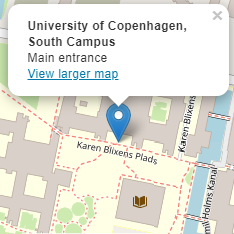‘Feeling in seeing’: embodiment and visual politics
Lecture by Manos Tsakiris, Dept. of Psychology, Royal Holloway, University of London & The Warburg Institute, School of Advanced Study, University of London, UK
Abstract
Photography mediates our experience of the world, especially in a culture powered by images at an unprecedented level. Images in the digital age and the era of alternative facts mediate our relations to other human beings and make our negotiation between what is real or fake challenging. As part of the BIAS (Body and Image in Arts & Science) project, we set out to investigate the role of embodiment in two timely debates in visual politics.
First we investigated how our visceral responses, as the basis of subjective feelings, influences our relation and responses to the authenticity of aversive photojournalistic images. We show that higher neurophysiological and affective arousal at the first perception of an image predicted the probability with which participants would judge that image as ‘real’ in a subsequent session. This tight link between arousal and realness judgments was stronger in older (‘digital immigrants’) rather than younger participants (‘digital natives’). These findings highlight the crucial role that physiology plays in engaging us with imagery, beyond cognitive processing. ‘Feeling in seeing’ seems to be a salient signal that at least partly determines our beliefs in a culture powered by images.
Second, we investigated how the ways in which refugees are visually framed in the media, in small groups with identifiable faces, or in large groups without recognizable faces, affect their dehumanization. Participants seeing refugees in large groups tended to assign less uniquely human emotional states to them. Moreover, this visual framing effect influenced participants’ decision making in a refugee’s dilemma scenario. These findings demonstrate the power that prevalent depictions of large groups of individuals in the media have on the public’s perception of refugees as human beings.
Overall, the ways in which human beings are depicted in the media have far-reaching consequences for our attitudes towards them, their well-being and our democracies. By considering at the same time the underlying neural, physiological and cognitive mechanisms that guide our responses to images as well as the contextual cultural effects on how these mechanisms are recruited, we hope that these findings contribute to long-standing but still timely and multidisciplinary debates on the photography of suffering.

